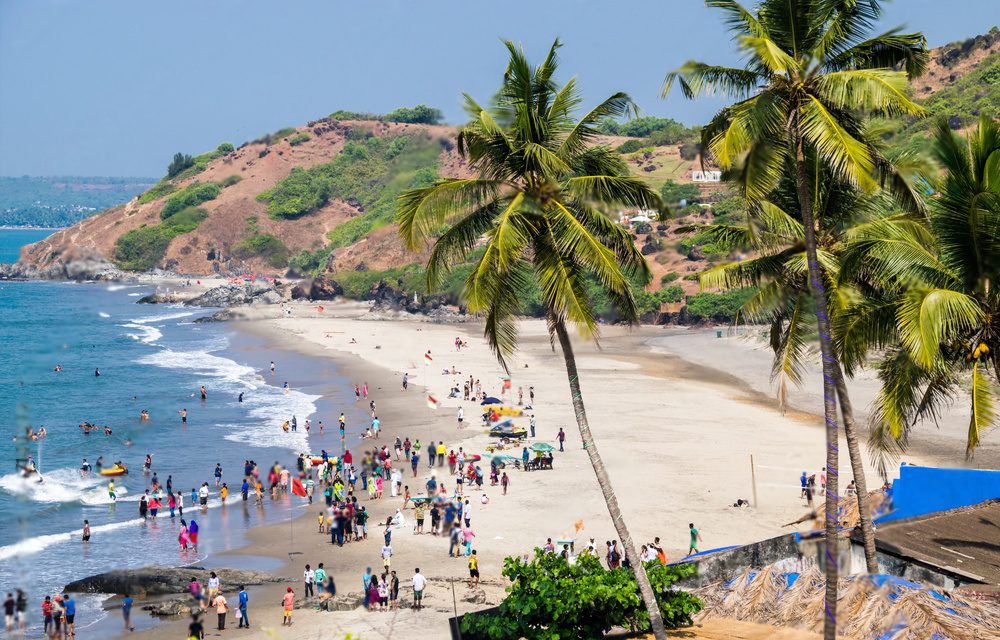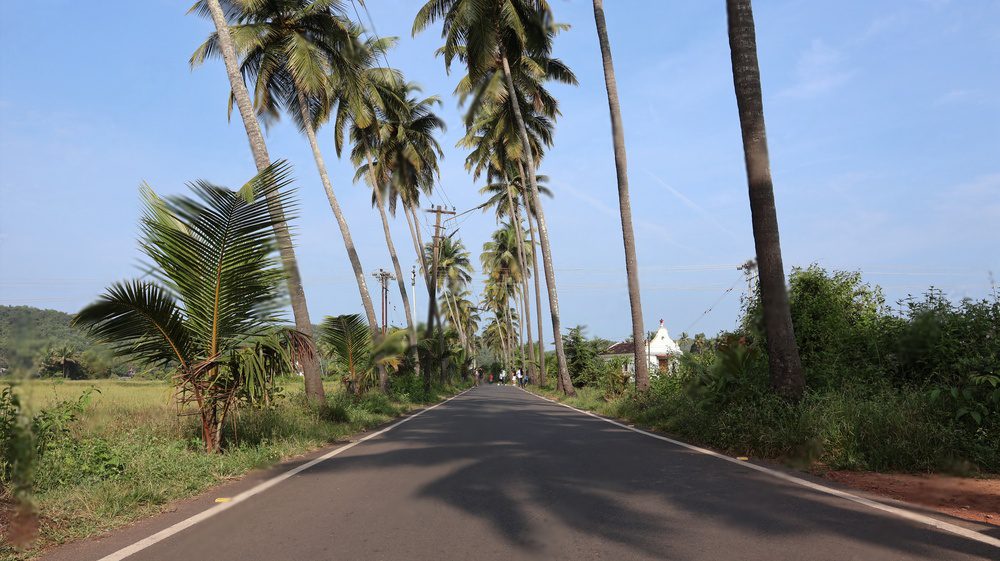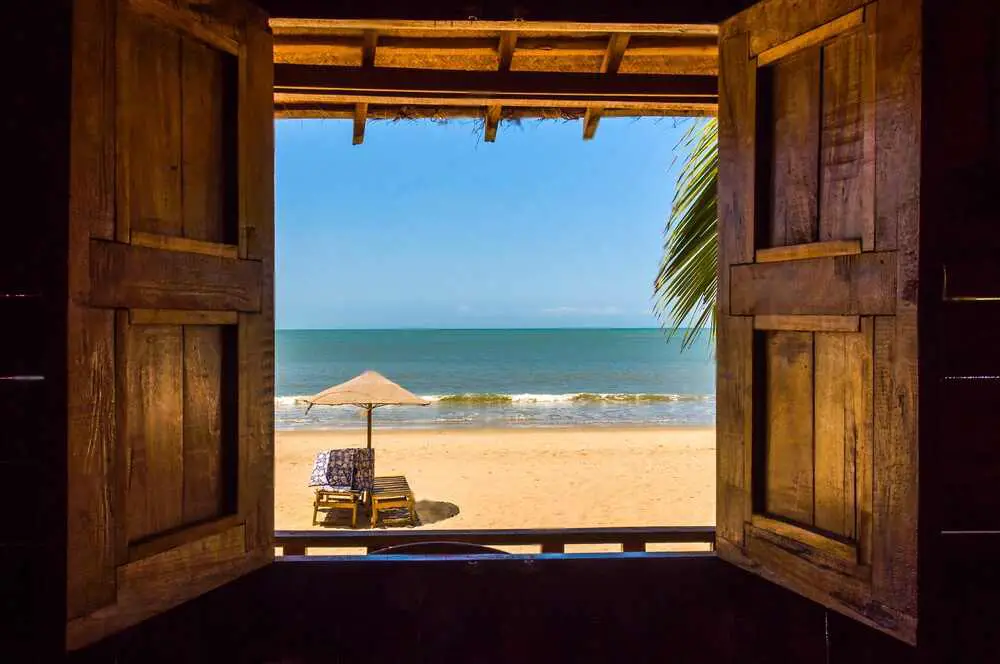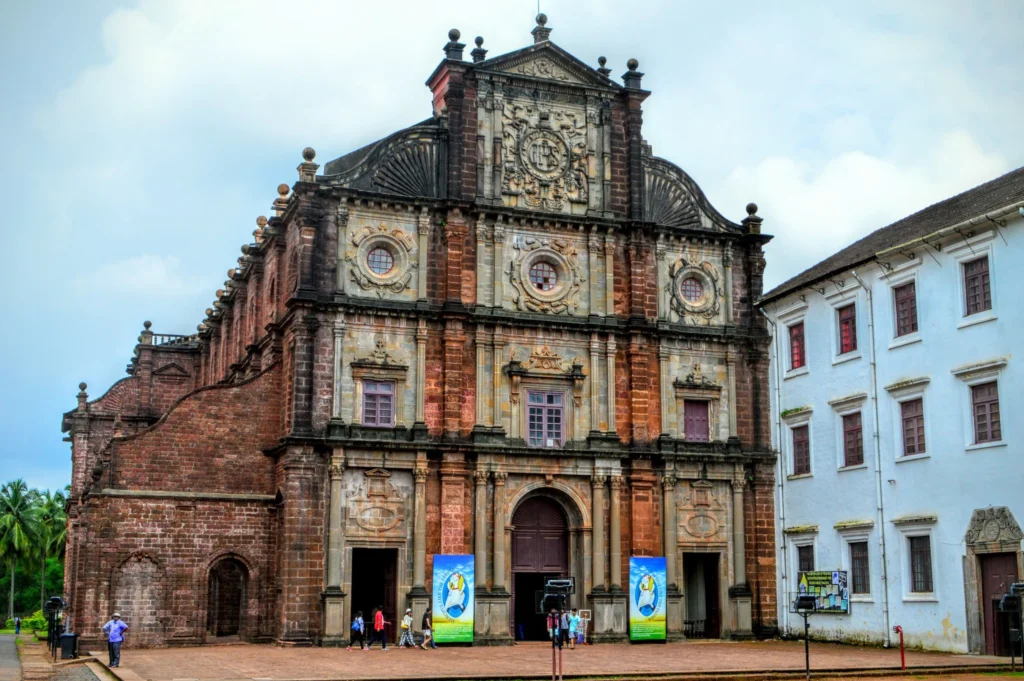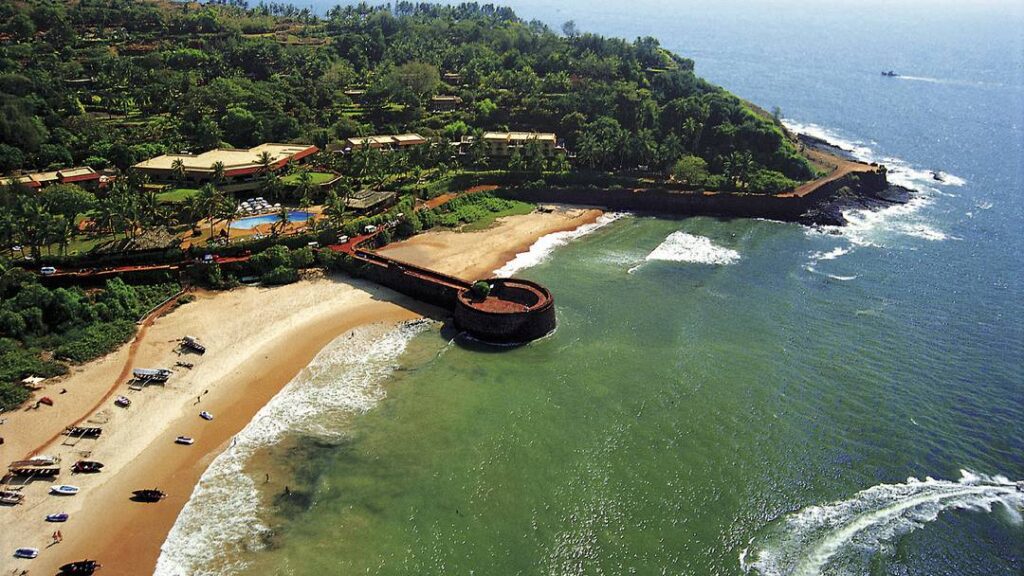Kushinagar beckons, a sacred haven revered by Buddhists worldwide. Nestled in Uttar Pradesh, India, this destination holds immense significance, marking the place where Lord Buddha attained Mahaparinirvana, the ultimate state of enlightenment. Pilgrims and travelers alike flock to Kushinagar, seeking serenity, spirituality, and a chance to walk in the footsteps of the Buddha.
Ancient stupas, monasteries, and temples stand sentinel, testaments to the Buddha’s teachings and enduring legacy. Explore these profound sites and immerse yourself in the rich tapestry of Buddhist history. Kushinagar offers a unique opportunity to connect with your inner self and discover the path to enlightenment, just as the Buddha did centuries ago.
How to reach:
- Fly in: The nearest airport is Kushinagar Airport, with connections from major Indian cities. Taxis and buses are available upon arrival for the short trip to town.
- Train travel: Gorakhpur Junction Railway Station, 50 kilometers away, offers connections to major Indian cities. Taxis and buses connect you to Kushinagar from here.
- Road trip: Kushinagar is well-connected by road to major cities. Choose from state-run or private buses, taxis, or car rentals.
- Local travel: Explore Kushinagar’s charm with auto-rickshaws, cycle-rickshaws, or taxis. Many hotels offer transportation services for sightseeing.
Best time to visit:
Winters (October to March)
Kushinagar’s winter beckons with mild temperatures and clear skies, perfect for exploring its many attractions. The Mahaparinirvana Temple, Ramabhar Stupa, and Mathakuar Shrine are all best enjoyed in this comfortable weather, with average temperatures ranging from 10°C to 25°C.
Summer (April to June)
Kushinagar’s summers can be challenging, with scorching temperatures reaching 45°C and high humidity. While exploring outdoors becomes difficult, if you do visit during this time, pack light, breathable clothing, sunscreen, and stay hydrated.
Monsoon (July to September)
The monsoon brings lush greenery to Kushinagar, but also heavy rainfall and waterlogged roads. While some may enjoy the monsoon atmosphere, be prepared for frequent showers if you choose to visit during this season.
Attractions:
Mahaparinirvana Temple:
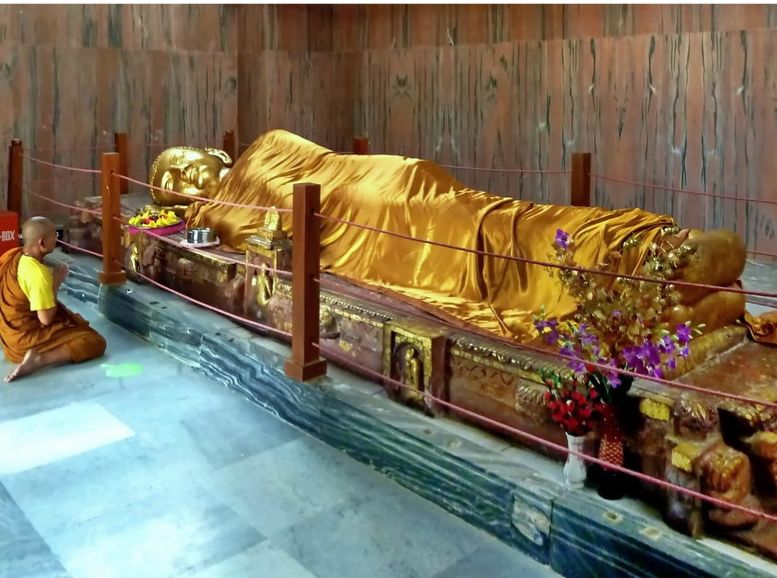

The Mahaparinirvana Temple stands as a cornerstone of Buddhist pilgrimage in Kushinagar. Here, Lord Buddha attained Mahaparinirvana, the ultimate state of enlightenment. Within its walls lies a captivating 6.10-meter long reclining statue of the Buddha, depicting him in a state of serene repose at the moment of his passing. The profound peace radiating from the statue leaves a lasting impression, a powerful testament to the Buddha’s teachings.
Ramabhar Stupa:
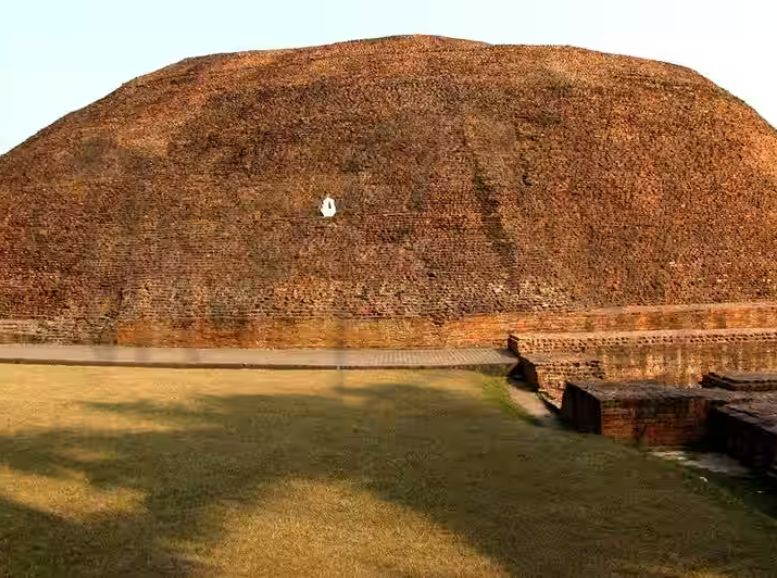

Adjacent to the Mahaparinirvana Temple lies the Ramabhar Stupa, imbued with deep spiritual significance. Believed to be the cremation site of Lord Buddha, this 15-meter tall stupa stands as a prominent landmark in Kushinagar’s Buddhist tapestry. Lush gardens envelop the stupa, creating a serene sanctuary for meditation and reflection. Here, amidst the tranquility, visitors contemplate the impermanence of life and the enduring legacy of the Buddha’s teachings.
Mathakuar Shrine:
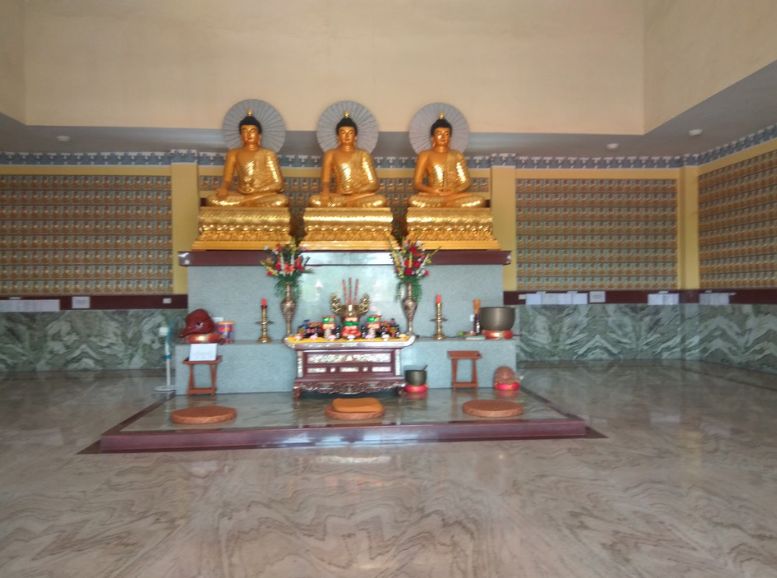

Stepping back in time at the Mathakuar Shrine, whispers of the Buddha’s life brush past. This ancient Buddhist monastery, believed to have been a place of solace for the Buddha himself, radiates deep significance. Inside, a captivating 6-meter long reclining statue of the Buddha echoes the pose seen at the Mahaparinirvana Temple, a constant reminder of his teachings. A revered pilgrimage site for Buddhists worldwide, the Mathakuar Shrine is a haven of tranquility, where visitors can seek solace, contemplate the impermanence of life, and connect with the Buddha’s enduring legacy.
Wat Thai Temple:
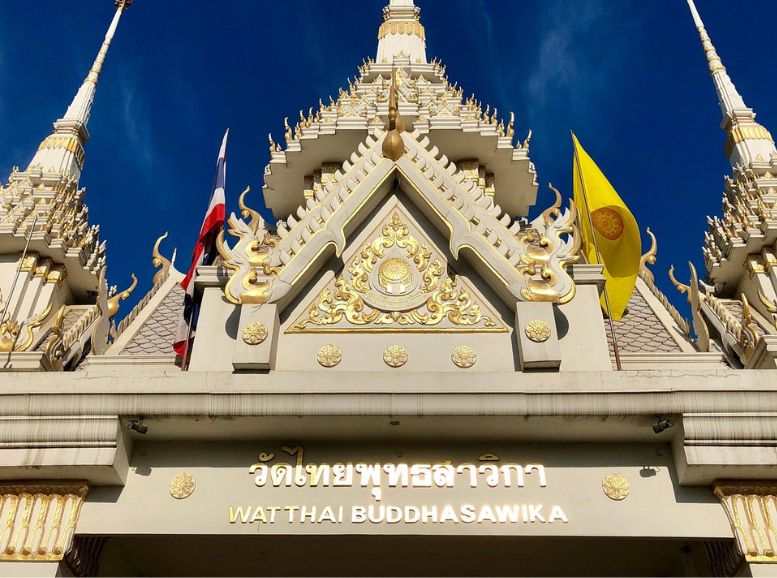

A splash of vibrant Thailand graces Kushinagar in the form of the Wat Thai Temple. This architectural gem stands out amidst its Buddhist brethren, adorned with intricate carvings and murals bursting with color. Each scene depicts moments from the life of Lord Buddha, offering a visual narrative for visitors. Step inside the Wat Thai Temple and be enveloped by tranquility. It’s a haven for meditation, prayer, and reflection on the Buddha’s teachings. This unique fusion of Thai artistry and Buddhist serenity makes the Wat Thai Temple a must-see for anyone seeking cultural beauty and a moment of peace.
Japanese Temple and Dhamek Stupa:
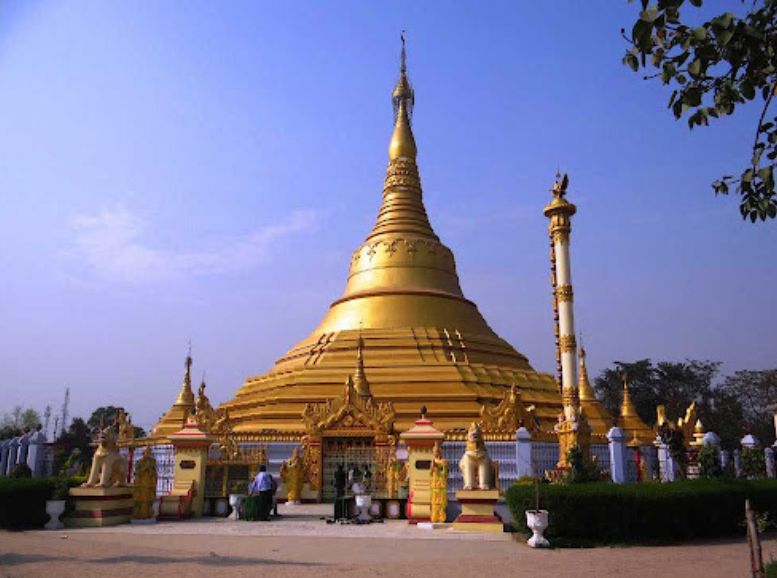

The Mahaparinirvana Temple, a pilgrimage cornerstone, enshrines a serene reclining Buddha statue. The Ramabhar Stupa, shrouded in tradition as the cremation site, is embraced by tranquil gardens. Whispers of the Buddha’s life echo at the Mathakuar Shrine, a revered site with a similar reclining statue. A vibrant fusion of Thai artistry and Buddhist serenity awaits at the Wat Thai Temple. Nestled together, the Japanese Temple, a testament to international reverence, stands near the Dhamek Stupa, marking the spot where Lord Buddha delivered his first sermon.
Kushinagar Museum:


History and art buffs, rejoice! The Kushinagar Museum is a must-visit. This treasure trove unveils a captivating collection of artifacts, sculptures, and relics whispering tales of the Kushana and Gupta periods. Immerse yourself in the region’s rich tapestry. But the exploration doesn’t end there. The museum proudly showcases a vast collection of Buddhist artifacts – statues, sculptures, and inscriptions that bring the life and teachings of Lord Buddha to life. As you wander through these profound objects, prepare to gain a deeper understanding of Buddhist history and culture, all within the walls of this fascinating museum.
Nirvana Chaitya:
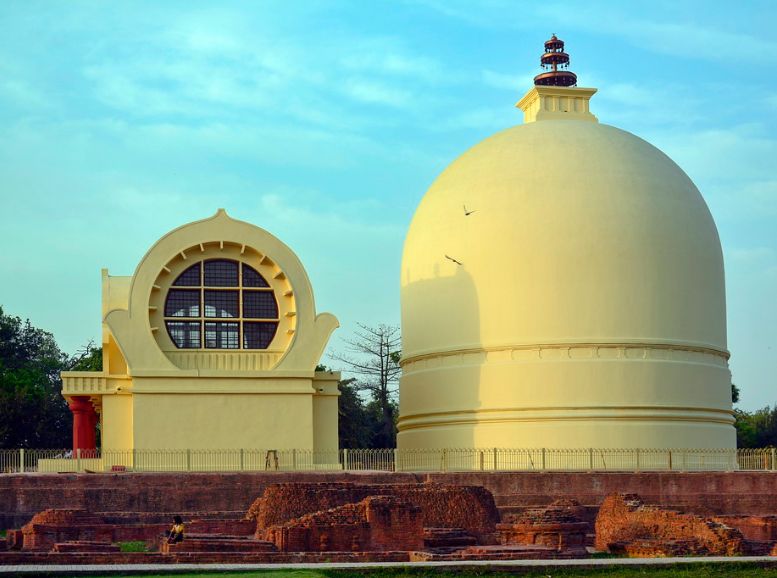

Unveiling Kushinagar’s tapestry unfolds further with the Nirvana Chaitya. This modern marvel isn’t just a building; it’s a celebration. Built to commemorate the 2500th anniversary of Lord Buddha’s Mahaparinirvana, it stands as a vibrant testament to Buddhism’s enduring legacy. Stunning architecture draws visitors in, while the serene ambiance fosters a sense of peace and reflection. A popular pilgrimage site for Buddhists worldwide, the Nirvana Chaitya offers a unique blend of modern design and timeless reverence.
Local Experiences:
- Unwind with Meditation: Seek inner peace and serenity by attending a meditation session at a Buddhist monastery or meditation center. Learn the art of mindfulness from experienced monks and practitioners, fostering a sense of tranquility.
- Immerse in Rituals: Witness the beauty and serenity of Buddhist practices by participating in a puja ceremony at a temple or monastery. Experience the chanting of prayers, the lighting of incense, and the offering of flowers, gaining a deeper appreciation for Buddhist rituals.
- Explore Local Markets: Delve into Kushinagar’s vibrant markets overflowing with local handicrafts, souvenirs, and religious artifacts. Find intricately carved Buddha statues, Tibetan prayer flags, and traditional pottery, textiles, and jewelry – a treasure trove to take home a piece of Kushinagar’s rich culture.
- A Culinary Adventure: Embark on a flavor journey by indulging in local delicacies like thukpa, momos, and Tibetan bread. Visit local eateries and restaurants to savor authentic Tibetan and Indian cuisine, experiencing the diverse culinary scene.
- The Art of Silk Weaving: Unveil the traditional art of silk weaving at a weaving center. Watch skilled artisans create intricate designs on silk fabric using handlooms, and discover exquisite silk sarees, scarves, and fabrics – perfect souvenirs.
- A Cultural Extravaganza: Immerse yourself in the vibrant culture by attending a traditional dance or music performance. Witness colorful folk dances, music recitals, and cultural shows that showcase the region’s rich heritage.
- Explore by Rickshaw: Experience Kushinagar like a local with a traditional cycle rickshaw ride. Let your friendly driver guide you through bustling markets, serene monasteries, and historic sites, uncovering hidden gems off the beaten path.
Travel tips:
- Chart Your Course: Research the must-see sights, opening hours, and any festivals happening during your visit.
- Respect the Sanctity: Remember, Kushinagar is a sacred space. Dress modestly at temples and monasteries, and remove shoes before entering religious sites.
- Cash is King: While ATMs exist, they might be unreliable. Carry enough cash, especially for rural areas or local markets where cards may not be accepted.
- Hydration is Key: Kushinagar can be hot and humid, especially in summer. Bring a water bottle and stay hydrated, particularly when exploring outdoors.
- Beat the Sun: Pack sunscreen, a hat, and sunglasses. The sun can be harsh, especially during summer months.
- Keep Your Belongings Close: As with any tourist destination, be mindful of your belongings in crowded areas like markets and attractions.
- Explore at Your Pace: Many attractions are within walking distance. Embrace the chance to explore on foot, savoring the sights and sounds at your own pace.
- Respect the Lens: Photography is generally allowed, but some areas might have restrictions. Be mindful of signage and respectful of any photography limitations.
- Monastery Manners: When visiting monasteries or meditation centers, be mindful of monastic etiquette. Avoid pointing your feet towards statues or monks, and refrain from photographing without permission.
- Off-Peak for Tranquility: To avoid crowds, consider visiting popular attractions during off-peak hours, like early mornings or late afternoons.
- Stay Informed: Keep yourself updated on local customs, traditions, and current events to ensure a smooth and enjoyable pilgrimage.
Conclusion
Unveiling the soul of Buddhism, Kushinagar transcends a typical destination. Here on Xplro.com, we curate your journey through this sacred town. Serene ambiance and rich spiritual heritage weave a tapestry of experiences. Connect with the timeless teachings of Lord Buddha, from the hallowed halls of the Mahaparinirvana Temple to the tranquil serenity of the Ramabhar Stupa. Explore ancient stupas, monasteries, and temples, or find inner peace with meditation sessions. Delve into vibrant markets brimming with local crafts, embark on a culinary adventure savoring Tibetan and Indian delights, or lose yourself in the vibrant tapestry of cultural performances. Explore by rickshaw or become a culinary master with a cooking class. Xplro.com unlocks the treasures of Kushinagar, a pilgrimage that will leave an indelible mark on your being.
FAQs
1. What is Kushinagar?
- Kushinagar is a small town located in the Indian state of Uttar Pradesh. It is one of the most important Buddhist pilgrimage sites in the world and is renowned as the place where Lord Buddha attained Mahaparinirvana, the final state of enlightenment.
2. How do I reach Kushinagar?
- Kushinagar is well-connected by air, rail, and road. The nearest airport is the Kushinagar Airport, also known as the Kasia Airport. The nearest railway station is the Gorakhpur Junction Railway Station, located approximately 50 kilometers away. Kushinagar is also accessible by road via state-run buses, private buses, and taxis.
3. What is the best time to visit Kushinagar?
- The best time to visit Kushinagar is during the winter months, from October to March, when the weather is pleasant and suitable for sightseeing and outdoor activities. However, the town can be visited throughout the year.
4. What are the main attractions of Kushinagar?
- The main attractions of Kushinagar include the Mahaparinirvana Temple, Ramabhar Stupa, Mathakuar Shrine, Wat Thai Temple, Japanese Temple and Dhamek Stupa, Kushinagar Museum, Nirvana Chaitya, and Sun Temple.
5. Is Kushinagar only important for Buddhists?
- While Kushinagar is primarily known as a Buddhist pilgrimage site, it is also of historical and cultural significance to people of other faiths. The town is home to several ancient monuments, temples, and shrines that attract visitors of all religious backgrounds.
6. What is the significance of the Mahaparinirvana Temple?
- The Mahaparinirvana Temple is one of the most important Buddhist pilgrimage sites in Kushinagar. It marks the place where Lord Buddha attained Mahaparinirvana, the final state of enlightenment. The temple houses a 6.10-meter long reclining statue of Lord Buddha.
7. Can visitors explore the Ramabhar Stupa?
- Yes, visitors can explore the Ramabhar Stupa, which is located near the Mahaparinirvana Temple. The stupa is believed to be the cremation site of Lord Buddha and is surrounded by lush gardens, making it a serene and peaceful place for meditation and reflection.
8. What is the Mathakuar Shrine?
- The Mathakuar Shrine is an ancient Buddhist monastery believed to have been visited by Lord Buddha during his lifetime. The shrine houses a 6-meter long statue of Lord Buddha in a reclining posture, similar to the one at the Mahaparinirvana Temple.
9. Is photography allowed at the tourist attractions in Kushinagar?
- Yes, photography is generally allowed at most tourist attractions in Kushinagar. However, visitors are requested to be respectful of any signage indicating areas where photography is prohibited.
10. Are there any accommodation options available in Kushinagar?
- Yes, there are several accommodation options available in Kushinagar to suit every budget and preference. Visitors can choose from hotels, guesthouses, and homestays located in the town and its vicinity.
11. What are some local experiences to enjoy in Kushinagar?
- Some local experiences to enjoy in Kushinagar include attending a meditation session, participating in a puja ceremony, exploring local markets, trying local cuisine, visiting a silk weaving center, attending a cultural performance, taking a cycle rickshaw ride, and joining a cooking class.
12. Is Kushinagar a safe destination for tourists?
- Yes, Kushinagar is generally considered to be a safe destination for tourists. However, like any tourist destination, it’s important to take common-sense precautions and be aware of your surroundings.
